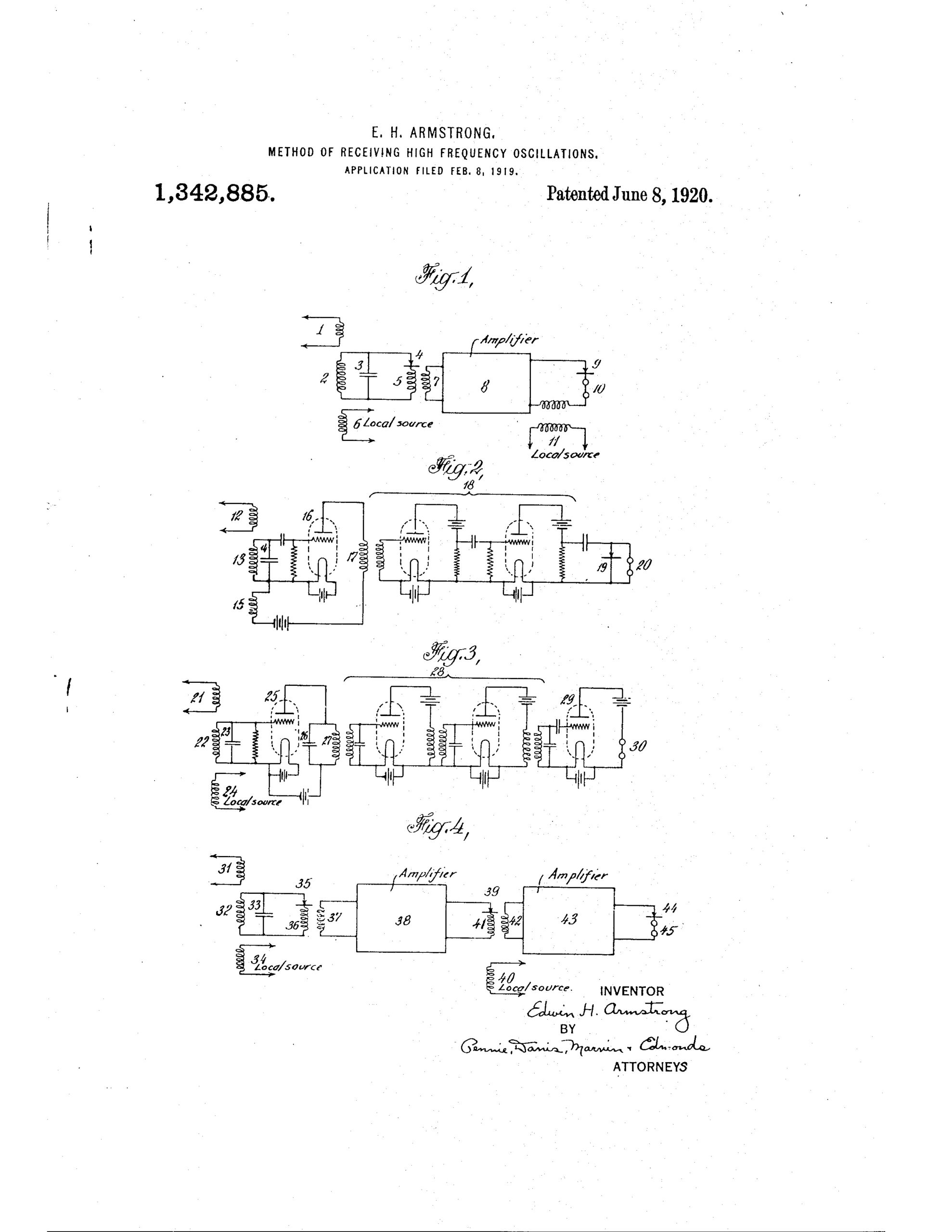Radio Inquiry Unit
While serving in the U.S. Army during World War I, Armstrong synthesized three ideas to create his superheterodyne circuit for selectively amplifying a very high frequency radio signal out of a noisy electromagnetic environment. While engineers agreed that it greatly improved radio reception, only the Radio Corporation of America (RCA) installed it in radio sets in the 1920s. The stages of the circuit were more complicated than alternatives, initially requiring more knobs for users to adjust, and therefore cost more to install in receivers. By the early 1930s, however, the increase in the number and transmitting power of stations, and changes in vacuum tubes and manufacturing techniques made the “superhet” circuit practically standard in radios around the world, including the radio chip in most smartphones. Similar to other patents, several people could claim priority, and Armstrong eventually lost his legal claim, to Lucien Lévy of France in 1929.

